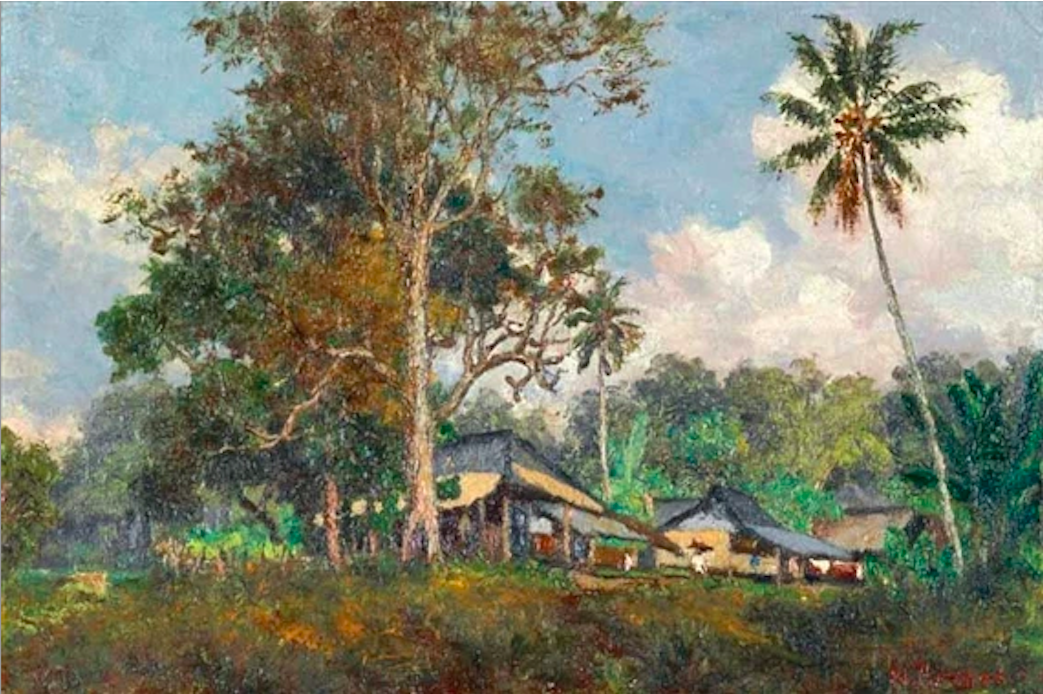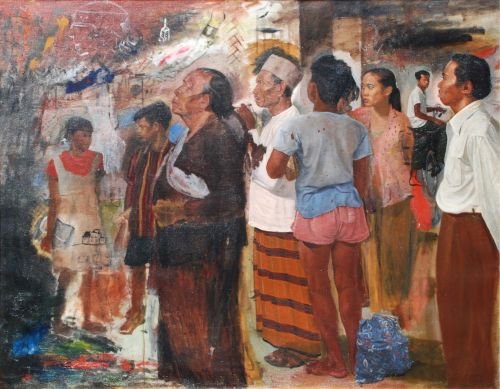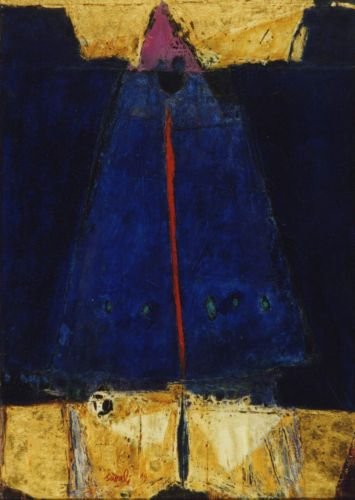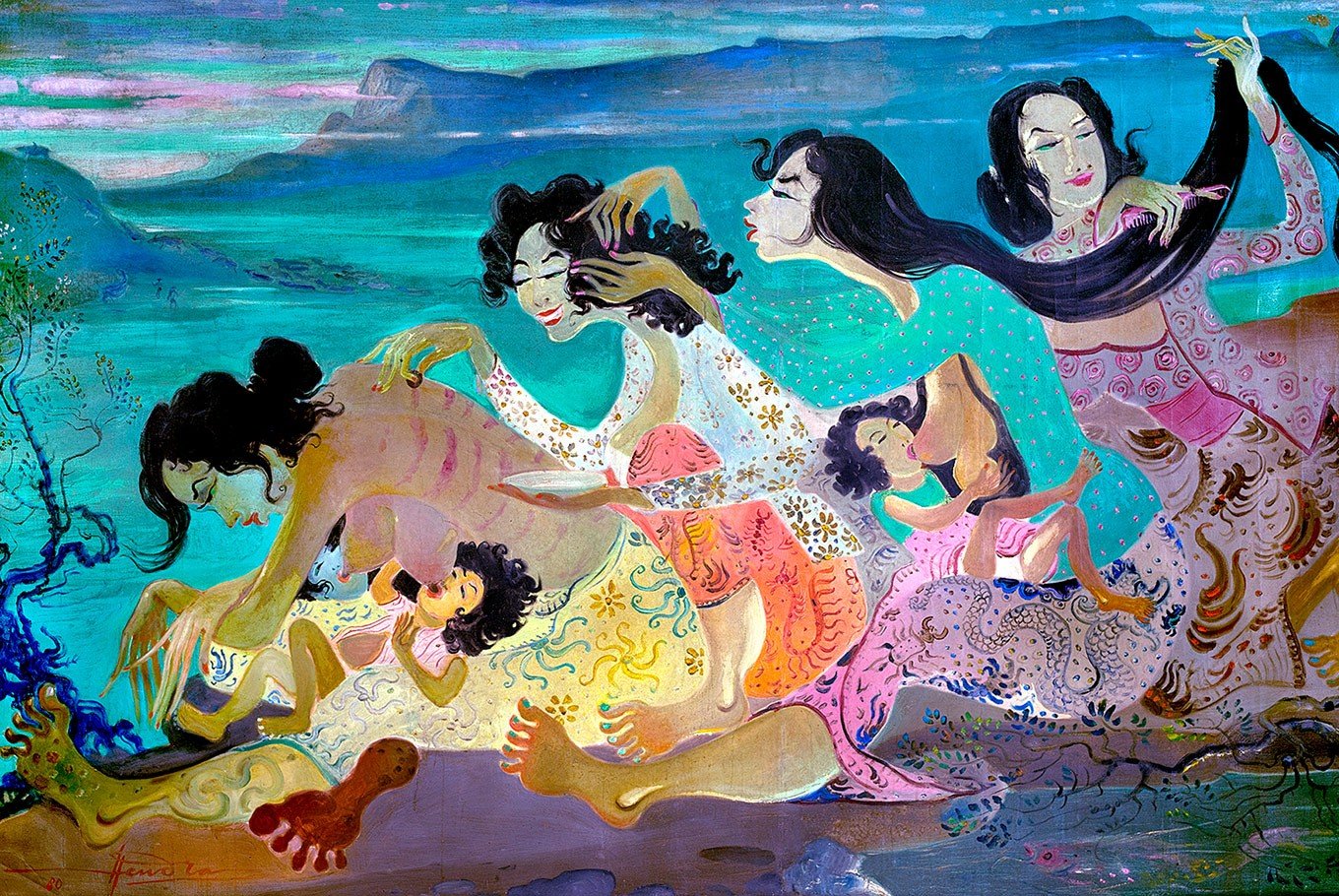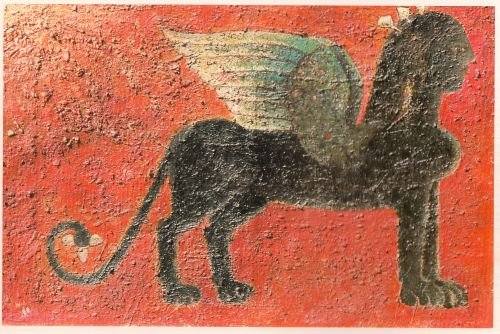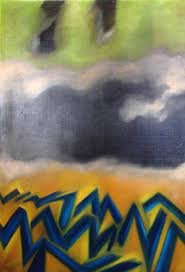Understanding historical development of Indonesian modern art - Part 1
Written by Haiza Putti | Read in Indonesian
When we talk about the history of Indonesian modern art, we will never be able to separate it from the social and political turmoil that went along with it. The history of modern art in Indonesia may be somewhat more complicated than the history of Western art, because its journey does not move in a linear way from traditional Indonesian art that has existed even from prehistoric times.
The modern art we will discuss is the ones whose development originated in the West and were brought to Indonesia by the colonialists, works in the form of paintings, sculptures, installations and so on. We can see the historical development of Western art from the Greek Period to the renaissance, modern, post-modern to contemporary works of the “present”. Thinking, critical attitude and innovation are always closely related to the development of modern art.
Fine arts with techniques like those in the West entered Indonesia during the Dutch colonial period, to be precise in the 19th century. At that time, a painter named Raden Saleh studied painting in Europe. Jakob Sumardjo in his writing “The Origin of Modern Indonesian Art” states that Raden Saleh's footsteps later became the foundation for the development of Indonesian modern art.
The “Dutch Ethical Policy”, which was issued by the government of the Dutch East Indies at the beginning of the 20th century, encouraged the spirit of nationalism which later appeared in the development of nationalistic thinking and spirit for all philosophers in Indonesia. In fine arts, efforts to find the image of Indonesian-ness in the arts continue, while maintaining the techniques of Western art.
1. The pioneer: Raden Saleh (1830)
During the colonial period, painting technique is one of the things that is passed down. Several Indonesian painters were born, one of whom was Raden Saleh who came from a noble family. The early development of Indonesian modern art can be seen from his departure to Europe to study painting.
Raden Saleh was the first recorded Indonesian modern painter to study painting in Europe. He adapts the natural and romantic style of the West. He received guidance from painters Antonio Payen (Belgium), A. Schelfhout (the Netherlands) and C Kruseman (The Hague). Raden Saleh is known for his skills in painting portraits and animals. Horace Vernet's painting style had a major influence on Raden Saleh's paintings which were later known as the romantic style.
Image: Antara Hidup dan Mati (1870) by Raden Saleh
When Raden Saleh was a resident in several cities in Europe, he often received orders for portrait paintings. Some of his works were displayed in the Rijksmuseum in Amsterdam. In 1931, Raden Saleh had a solo exhibition in Paris. Unfortunately, on that occasion, a Dutch colonial pavilion was burnt down and some of his most important works were lost in the blaze.
2. The emergence of naturalism: Mooi Indie (early 20th century)
At the beginning of the 20th century, there were beautiful paintings depicting Indonesian landscapes. The beautiful sky background, the clear mountains and the soothing flora arrangement; perhaps these are the basis of the typical drawing by Indonesian children: two mountains, the sun and a rice field.
The term “Mooi Indie” (Hindia Molek) is actually a satire of S. Sudjojono about works that only describe the natural beauty of Indonesia. We can see this trend in the paintings of several artists, such as Mas Pirngadie (Jakarta), Abdullah Suriosubroto (Parahyangan) and Wakidi (West Sumatra).
Image: Pemandangan Gunung (1935) by Abdullah Suriosubroto from IVAA
The Mooi Indie style is influenced by colonial painters, according to Jim Supangkat in his piece “Indonesian Heritage”. They imagined the Indonesian landscape as an exotic object, which was then brought back as a souvenir by the colonials to their home country. Jim called them paintings that are shallow, beautiful and aimed at tourism. This influence, according to Jim, then gave rise to a colonial mentality among painters at that time.
Image: View of Javanese Kampoeng (1919) by Mas Pirngadie from Mutual Art
Regardless of the debate, this period proves the artistic development of Indonesian artists who took their roots from the romantic and naturalist styles that developed in the West.
3. The important role of art associations: 1920s-1940s
The philosophical development of Indonesian youth at this time gave birth to art groups that uphold nationalist attitudes. The struggle to achieve an Indonesian image in the arts is the main goal, all while prioritising critical thinking. The groups and organisations that were born at that time took part in the dramatic development of Indonesian politics from the Dutch colonial period to the Japanese occupation to the independence period.
TAMAN SISWA (1922)
Taman Siswa, founded by Ki Hajar Dewantara, offered an alternative education system. The school encouraged its students to carry the spirit of nationalism. The curriculum did well in producing students with independent and critical minds without information force-feeding.
Taman Siswa, which upholds artistic skills, gave birth to several artists and their philosophies. Bringing colour to the Indonesian art scene which was previously dominated by Dutch Colonial painters, they were active in the Bataviasche Kunstkring, an art organisation founded by the Dutch East Indies government in Jakarta.
PERSAGI (Indonesian Drawing Experts Association-1938)
PERSAGI was born in an elementary school building at Gang Kaji in Jakarta. The organisation was chaired by Agus Djaja Suminta with S. Sudjojono as secretary and consists of other artists. This movement became the first stepping stone of the artistic ideas and practices of Indonesian art, with the aim of seeking a synthesis of traditional and modern painting. (IVAA)
PERSAGI was influenced by three main conditions; first, the drive to achieve independence; second, cultural conditions filled with fresh and revolutionary thoughts published in several media; lastly, the education background of the members who studied at Taman Siswa.
Image: Perusing a Poster (1956) by Sudjojono from IVAA
The thoughts expressed by PERSAGI, which S. Sudjojono called the “visible soul”, resulted in a tendency to paint in a realism style; capturing the real issues and social conditions of the community in order to give birth to a pattern that is characterised by Indonesian-ness.
Their paintings were exhibited at the Bataviasche Kunstkring (1941) after previously being rejected. In March 1942, PERSAGI was dissolved by Japan by merging all organs of struggle into POETERA (Poesat Tenaga Rakyat). (IVAA)
Japanese Occupation - POETERA, Keimin Bunka Shidoso
During the Japanese occupation of Indonesia, several prominent experts, writers and artists were involved in newly-founded organisations, namely POETERA (Poesat Tenaga Rakyat—1942) and Keimin Bunka Shidosho (Institute for Guiding Education and Folk Culture—1943). Keimin Bunka Shidosho is included in Japan's agenda to establish the Greater East Asia Co-Prosperity Sphere.
According to Antariksa's piece published on the Biennale Jogja website, organisations that were formed at that time served as a means to spread and invest ideas of nationalism and independence to the people, encouraging awareness of the power of art and collectivity in politics.
Japan's success in negotiating with Soekarno was one of the keys to the involvement of artists in several Japanese war projects. Japan provides a variety of painting materials, courses with Japanese teachers and leading Indonesian painters in various cities, as well as exhibitions, competitions and art awards. These contributed to an explosion in the number of artists in Indonesia during the brief period of the Japanese occupation.
Some Indonesian artists who took part in these two organisations were S. Sudjojono, Affandi, Hendra Gunawan and Henk Ngantung and Mochtar Apin.
Image: Memanah (1944) by Henk Ngantung from IVAA
Subsequently, several art groups were formed, starting from the Painters Front (1945) that painted the intense war events around Bandung at that time. It was followed by the Gelanggang group which gave birth to the Gelanggang Manifesto which reads: "We are the legal heirs of the world's culture and we are furthering this culture in our own way". Young Indonesian Artists (SIM) and the People's Painters were formed in 1946. They produced anti-Dutch colonial works.
Image: Illustration by Mochtar Apin (1946) from IVAA
Unlike other movements, the Indonesian Painters Association (GPI—1948) believed that art should be separated from politics. The reason for the difference in views prompted Affandi, who was followed by Sutiksna, Zaini, Oesman Effendi and other painters, to form the GPI.
Pelukis Indonesia was founded in 1950 by Kusnadi, Sumitro and Sasongko, who were previously members of Pelukis Rakyat.
4. The emergence of the academy of fine arts
ITB - Bandung Institute of Technology
This first art education in Indonesia was established under the Faculty of Engineering, University of Indonesia at the initiative of Simon Admiral and his colleagues. Inaugurated under the name Universitaire Leergang Voor de Opleiding van Tekenleraren (1947), the school is known today as the Faculty of Art and Design ITB. The school made a huge contribution to the modern concept in art education.
Image: Documentation of Universitaire Leergang Voor de Opleiding van Tekenleraren from Tropenmuseum
Ries Mulder, who compiled the syllabus for the practical drawing course, had a great influence in shaping the styles and tendencies of his students. He introduced the cubism style to produce a geometric abstract style from the West to his students, which at that time was contrary to the figurative and nationalism tendencies proclaimed by Soekarno. We can see it in the works of painters such as Srihadi Soedarsono, Ahmad Sadali, Mochtar Apin, But Mochtar and Sudjoko.
Image: Gereja di Bandung (1958) by Ries Mulder from Wikipedia
When the Bandung painters exhibition (1954) took place, Jakob Sumardjo called it the “Western Laboratory”, criticising the dominance of the Western characteristics compared to the nationalist characteristics in Yogyakarta.
Image: Gunungan Pertama (1969) by Ahmad Sadali from IVAA
ASRI - Indonesian Academy of Fine Arts
ASRI was founded by the Indonesian government in 1950 to seek Indonesian style and promote Indonesian arts and culture. Several artists have led ASRI, including Hendra Gunawan, R.J. Katamsi and Djajengasmoro. The majority of the teachers are self-taught painters, and are influenced by painters who have built their own studios, such as Sudjojono, Affandi and Hendra Gunawan.
Image: Menyisir Sambil Menyusui by Hendra Gunawan from The Jakarta Post
Although the Dutch art teaching model was applied, in contrast to ITB which later produced a universal trend, ASRI prioritised national identity by paying attention to traditional arts. Figurative style, realism and expressionism dominate in the works. The Indonesian-ness characteristics are evident in the choice of subjects, such as landscape paintings, local people and local mythology.
Image: Buroq (1968) by Widayat from IVAA
IKJ - Jakarta Arts Institute
The Jakarta Arts Institute (IKJ) is part of the Taman Ismail Marzuki area in Jakarta. It was established by the order of Ali Sadikin in 1968 as a forum for performing arts, fine arts and film. The teaching model at IKJ revolves around the workshops of the artists. Sensitivity to surroundings and technical prowess are the focus of teaching. IKJ was the first art school to open craft courses that refer to the Western teaching model, bridging Indonesian traditional arts and modern art.
Image: Painting by Sulebar Soemarkan from IVAA




